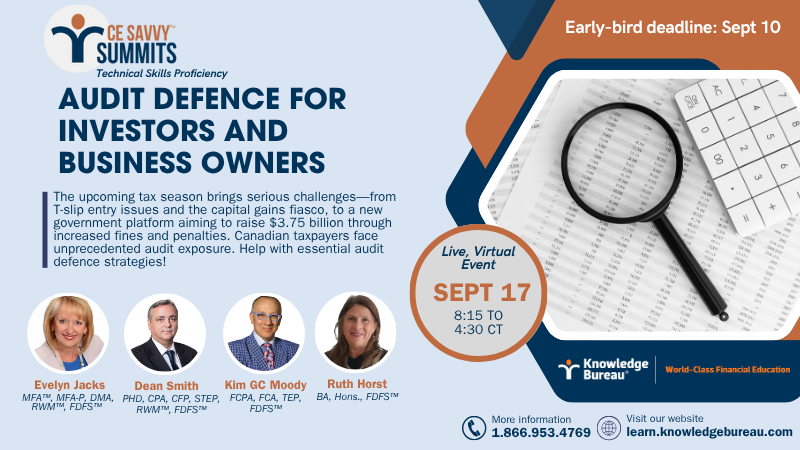Last updated: July 09 2025
Hazy Future: Trillions in Deficit Spending Coming?

Geoff Currier
Prime Minister Mark Carney has borrowed heavily from U.K. Prime Minister Keir Starmer’s playbook in his fiscal framework. He plans to split Canada’s fiscal books into two categories: capital or public “investment” and day to day operations. Carney and Starmer may understand the mechanics of this strategy but there is confusion in financial circles, including in the Parliamentary Budget Office. In advance of a federal budget this fall, understanding this change is important, especially for tax and financial advisors.
The Backdrop. Here’s what we do understand about this approach. The PM plans to balance the operating budget within three years using existing tax revenues. He then plans to use borrowing to add spending to capital expenditures, rather than raising taxes. This is similar to the U.K. Labour Party’s strategy, for whom Carney was an advisor. The belief is that borrowing money for capital expenditures will spur economic growth.
The PBO Response: The Parliamentary Budget Office (PBO) frequently finds itself at odds with the federal government, regardless of who is in power. In this case the PBO notes that the deficit will be smaller than had been predicted but that the PM’s spending plans are too vague to be properly evaluated.
Here’s the problem: the PBO report of June 19 says the Liberal government’s accounting model makes it difficult to determine what qualifies as capital spending and what comes under the operational umbrella. This uncertainty, says the PBO, makes it difficult to evaluate Carney’s pledge to cut waste in the public service.
It needs to be pointed out that the PBO is not infallible. Yves Giroux’s office had predicted that our economy would grow by 1.8% in the 4th quarter of 2024 and by 1.6% in the first quarter of 2025. Both missed the mark. The actual growth in the 4th quarter was an encouraging 2.1% and in the first quarter of 2025, 2.2%. This growth can be partly explained by a spike in pre tariff activity.

*Estimates
Deficits and Spending: The good news is that the 2024-25 deficit will be $4.3 billion less than had been predicted in last fall’s economic statement. Higher than anticipated tax revenues (tariffs) are largely responsible.
While Carney’s public stance is to suggest that he’ll streamline the federal government, he is also planning extensive borrowing which will ultimately add to the national debt. To fund the military and to meet Canada’s climate targets, we’re talking potentially trillions of dollars of borrowing over the next two decades.
Wording Matters: Here’s a tip for you to pass along to your clients. Canada’s immediate fiscal future is about spending, not investing.
But this is not how government spending is presented. The last federal budget under Justin Trudeau used the word “investment” 440 times and the word “spending” just 35 times.
In this age of lazy news reporting, media outlets will also use the word “invest” when they should be using “spend” to give the public a clearer picture of what is happening. When we invest, we expect to know about the return on that investment (ROI). We rarely get that from the government.
Give your clients a heads-up to watch for the word “invest”. If the “investment” is coming from borrowing, it is their children and grandchildren’s money that is being spoken of.
The Bottom Line: What matters is what you keep for a more expensive future. Taxpayers can do the opposite: invest not spend, to secure their financial futures. Investing now in tax assisted investment accounts like the TFSA (Tax Free Savings Account) can help young people save for a tax free retirement – a great investment if taxes are anticipated to rise, which they are.
Influencial writers are already suggesting everything from GST/HST hikes to Defence and Security Taxes, to wealth taxes.
Meanwhile, Mr. Carney has pledged to tie government operational spending to tax revenue. He has also promised to reduce taxes. Both ideas have appeal but he runs the risk of painting himself and the public service into a corner if tax revenues should take an unexpected dip.
The PM isn’t even going to bring down a budget until at least the fall. It’s hoped by that time we’ll have a better idea of where we’re headed financially, and tax and financial advisors will want to pour over the private sector forecasts to calculate the effect of government spending on short term investment decisions as a result.
Here’s the full PBO report:
Check out Season 1 of our new podcast- Real Tax News You Can Use with Evelyn Jacks
Additional Educational Resources: The CE Summit – September 17. The Topic: Audit Defence

